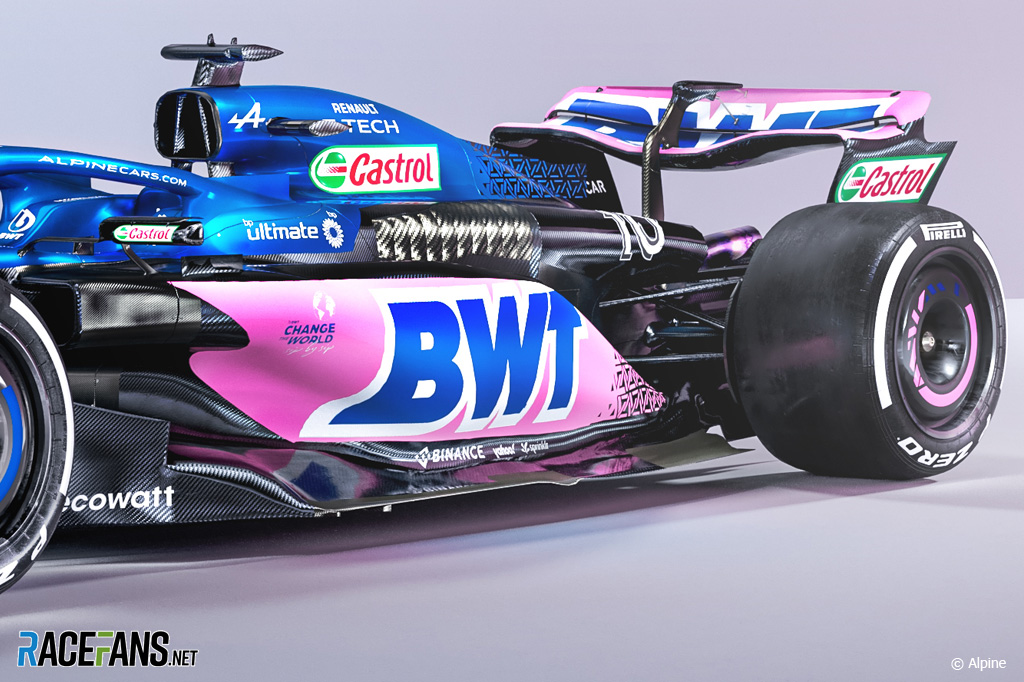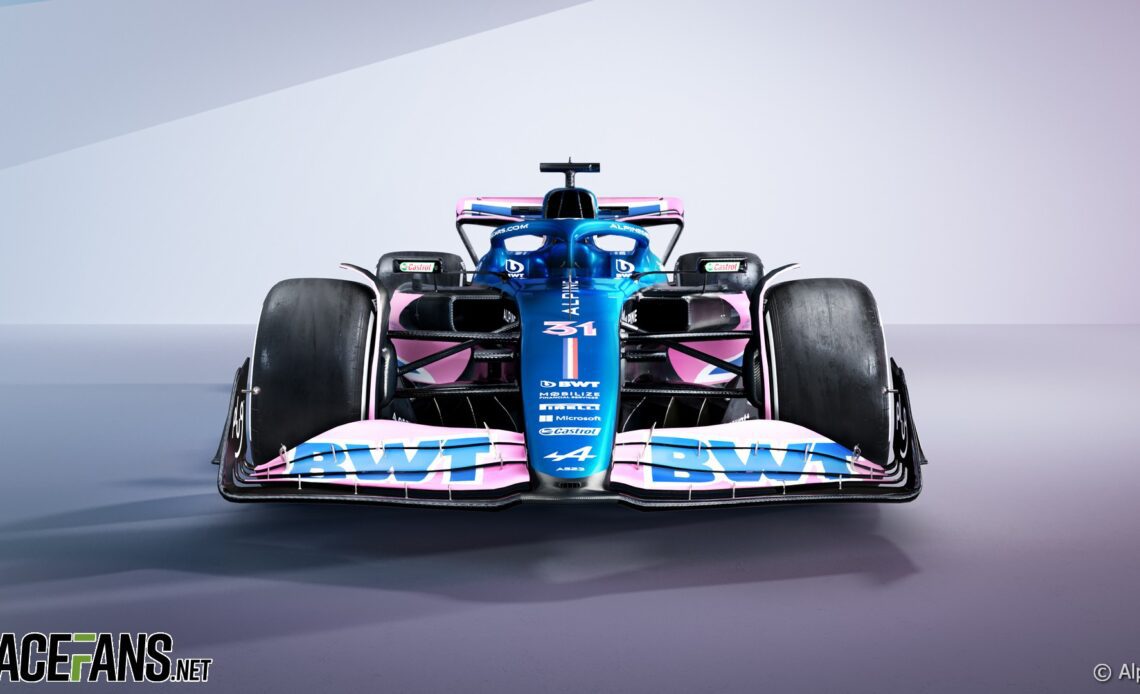Alpine’s A522 showed flashes of promise last year, including an appearance on the front row at the Canadian Grand Prix.
The car was quick enough to comfortably finish fourth in the constructors championship, but they ended up prevailing in a close fight with McLaren, largely because of the number of points lost due to reliability problems.
At the launch of its successor, the A523, technical director said the team “set ourselves some aggressive targets” to improve in 2023. “Targets that were going to challenge us, but were going to deliver what we need to do to compete at the right level.”
The team has focussed its attention not only on the reliability problems it encountered, but suspension and aerodynamics changes aimed at improving the car’s efficiency. Facing the same weight-saving problems the entire grid has grappled with, Alpine claim to have been successful, and got the A523 beneath the minimum weight limit of 798kg.
Front wing and suspension
The changes to the front of the car are mainly structural and are intended to allow the team to fine-tune its set-up more successfully, says Harman.
“We started off for the front of the car with the main plane of the front wing. We’ve looked quite extensively at changing the nose concept here. There’s a very different structure in here which gives us more freedom to change more elements of the front wing, particularly more quickly, and allow us to control that air flow more consistently into the front suspension area.”
The A523’s front suspension has been revised in order to improve how it directs the airflow towards the intakes for the floor, which is responsible for so much of the downforce generation on current cars.
“The front suspension control is exactly the same as the A522, but it’s not the same in terms of its kinematics in the way it works,” said Harman. “We’ve changed the position of our wishbones quite considerably – again, to help with that pressure from the flow through that area, to make sure that we present the air to the front of the floor in the right attitude, making sure that we can balance the amount of airflow that’s going both over the top of the floor and into the diffuser itself into the front fences.
“We’re always controlling that distribution of mass flow between what goes to the rear of the car and what gets out-washed outside.”
Advert | Become a RaceFans supporter and
Floor and sidepods

Click Here to Read the Full Original Article at RaceFans…

